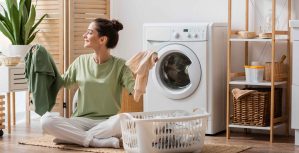7 Easy Home Upgrades for Better Indoor Air Quality
As we tend to spend more time indoors than we did several decades ago, fresh and airy spaces are have become imperative. Our indoor air has to be of good quality, and sometimes, even the smallest of changes can have a big impact on our health and mood. If you’re looking for a way to boost your indoor air quality, check out these seven easy tips on how to do so.
Get a vacuum cleaner with strong suction
Allergens, chemicals, and toxic pollutants can accumulate in our households without us even knowing it. While a conventional vacuum does remove a certain portion of those harmful particles from the air, they are likely to push allergens back into the room. That’s why it’s better to opt for a vacuum cleaner that has rotating brushes, strong suction, and a HEPA filter. Using this type of vacuum can help reduce the concentrations of lead in the air, as well as pollen, pet dander, and dust mites, without them being returned into the air. Also consider storing away your old belongings that are taking up space cluttering up your home and gathering dust. By decluttering you can improve the air quality, you can pack away old belongings in Self Storage London as a viable solution.
Get a microfiber dust mop to battle the dust indoors
After vacuuming comes mopping, and the type of mop you use to clean your floors can help improve indoor air quality. The best material to go with for your mop is microfiber. Microfiber is the type of material that will last you longer than, say, cotton. It captures more dirt and dust than traditional fibers, polishing the floors and picking up the dust that’s left after vacuuming. What’s more, microfiber mops don’t even require any chemicals and cleaners to capture any lingering allergens, so you can skip all that and just use water to clean your floors.
Use homemade cleaners instead of commercial ones
Even though there are times when you can do without cleaning products, there are surfaces in your home that simply must be sanitized. Tables, kitchen counters, and desks are all surfaces we usually eat and prepare food on, so they must be properly cleaned to avoid ingesting bacteria. However, the kind of cleaners you use to keep your house clean can also affect the quality of indoor air. Therefore, it’s best to stay away from commercial cleaners that are full of chemicals and toxins that have a negative effect on your health. Consider making your own cleaning products using ingredients such as baking soda, lemon, and vinegar as a healthier alternative for keeping your home spick and span.
Include an air purifier to filter the indoor air
After you’re done with cleaning, you have got to make sure that your indoor air is filtered and purified. Cigarette smoke, pet hair, and the dust from the AC can all cause serious health issues, and things get even worse if you’re suffering from asthma or allergies. Add to this the fact that most of our time is spent indoors (about 90%) and you’ve got a recipe for disaster. However, there is a way to remove air pollutants from our homes – using a room air purifier. An air purifier will eliminate mold spores, absorb allergens, and rid your home of smells that come from cooking or smoking, leaving your air clean and fresh, and keeping your family healthy.
Implement salt lamps to reduce air contaminants
A popular type of negative ion generator, salt lamps bring an array of health and environmental benefits – from balancing electromagnetic radiation and increasing energy levels, it’s no wonder salt lamps became a part of many homes, with a number of homeowners intrigued by their healing properties. Another benefit that should be added to list is their ability to purify the air. Often praised by natural living aficionados, they’re said to remove pollen, dust mites, cigarette smoke, and other contaminants from the air, with their efficacy allegedly stemming from hygroscopy – absorbing the water vapor from the air. They also double as decor and a source of light, turning your home into a peaceful oasis.
Make your own essential oil to improve air quality
One of the ways to reduce bad odor in your home is to use essential oils. Poor air quality can easily be improved by diffusing oils derived from plants. A popular form of aromatherapy, essential oils have been used for thousands of years. Praised by many for their healing properties, essential oils found their way into homes of many as a safe and cost-effective therapy that is natural and eco-friendly. Use plants such as clove, anise, and ylang-ylang to make your own essential oil and neutralize the inflammatory side effects from dust particles in the air, while a cocktail of tea tree, clove, thyme, and lemon oils makes for a powerful antifungal mix.
Add plants to freshen up your living space
Nothing will freshen up your space more than a couple of plants here and there. A great decorating tool, greenery can also help remove the toxins from the air and use them to produce oxygen. However, not every plant will have the same effect on your indoor air quality – it’s best to choose between Bamboo Plant, English Ivy, Peace Lily, and Snake Plant to ensure the air in your home is toxin-free.
There you have it – seven easy tips for better indoor air quality. By including any one of these home upgrades, you are sure to create a healthy, germ-free environment for you and your loved ones to enjoy.
Share It on :





